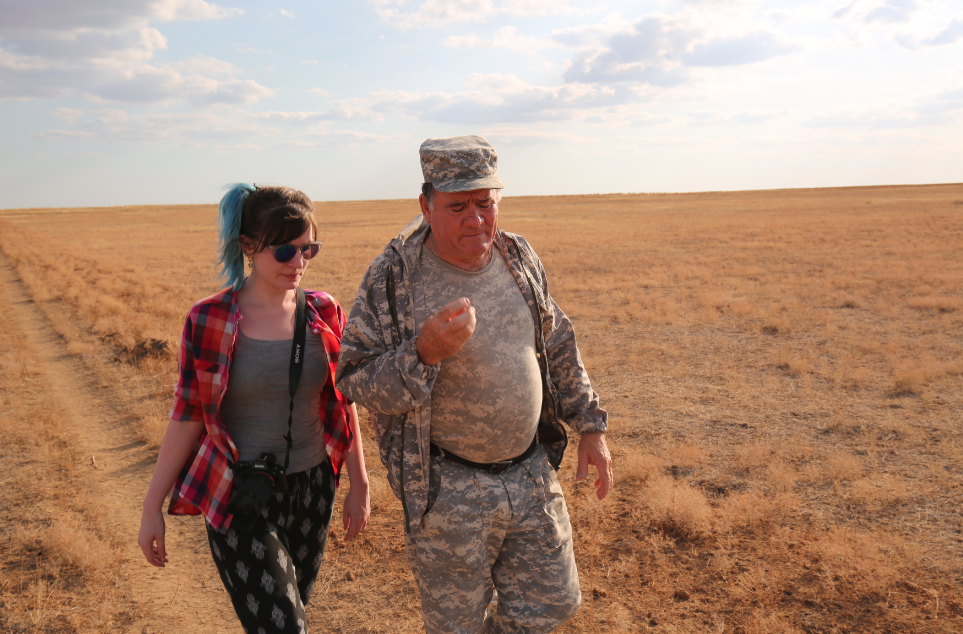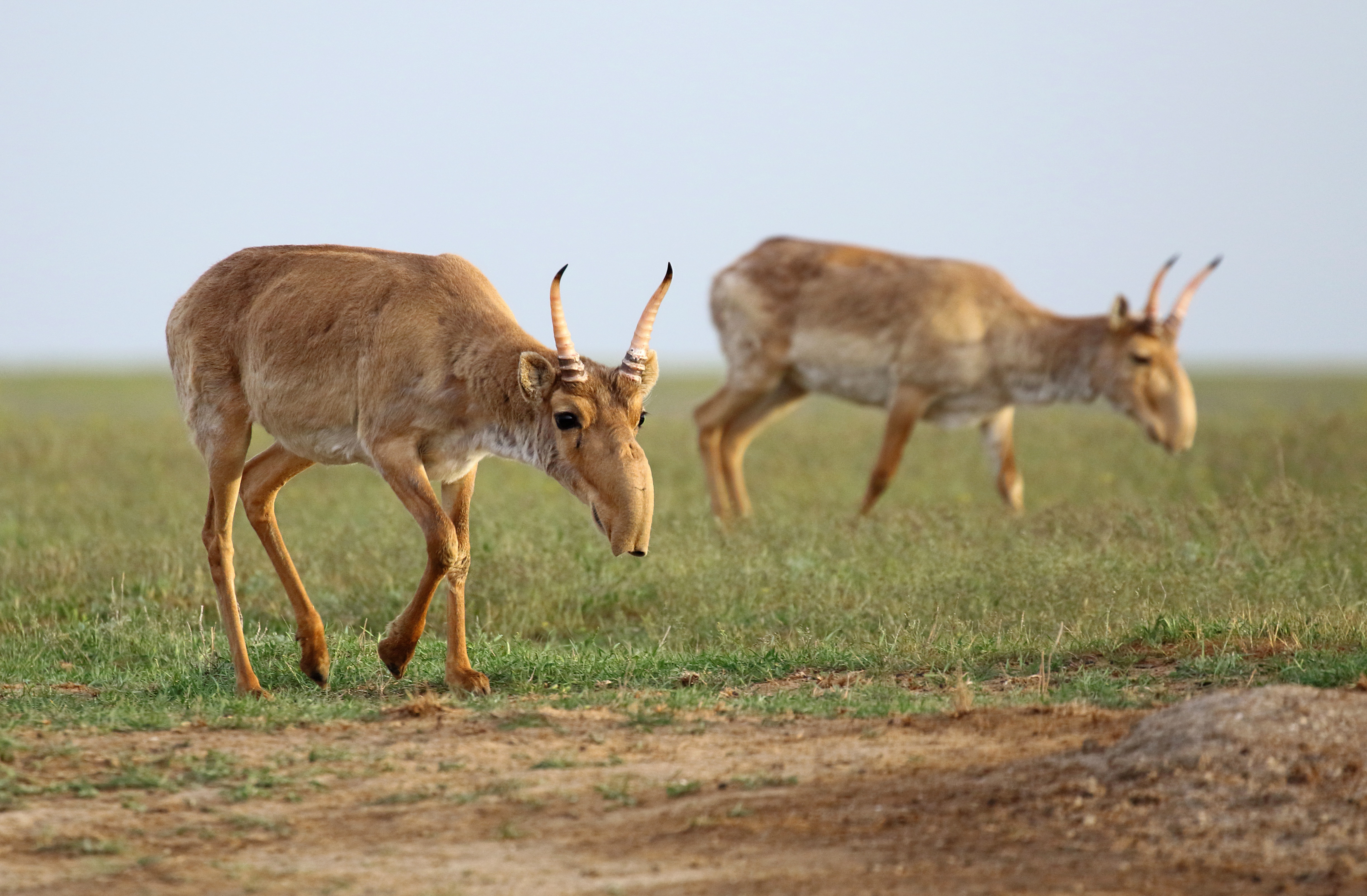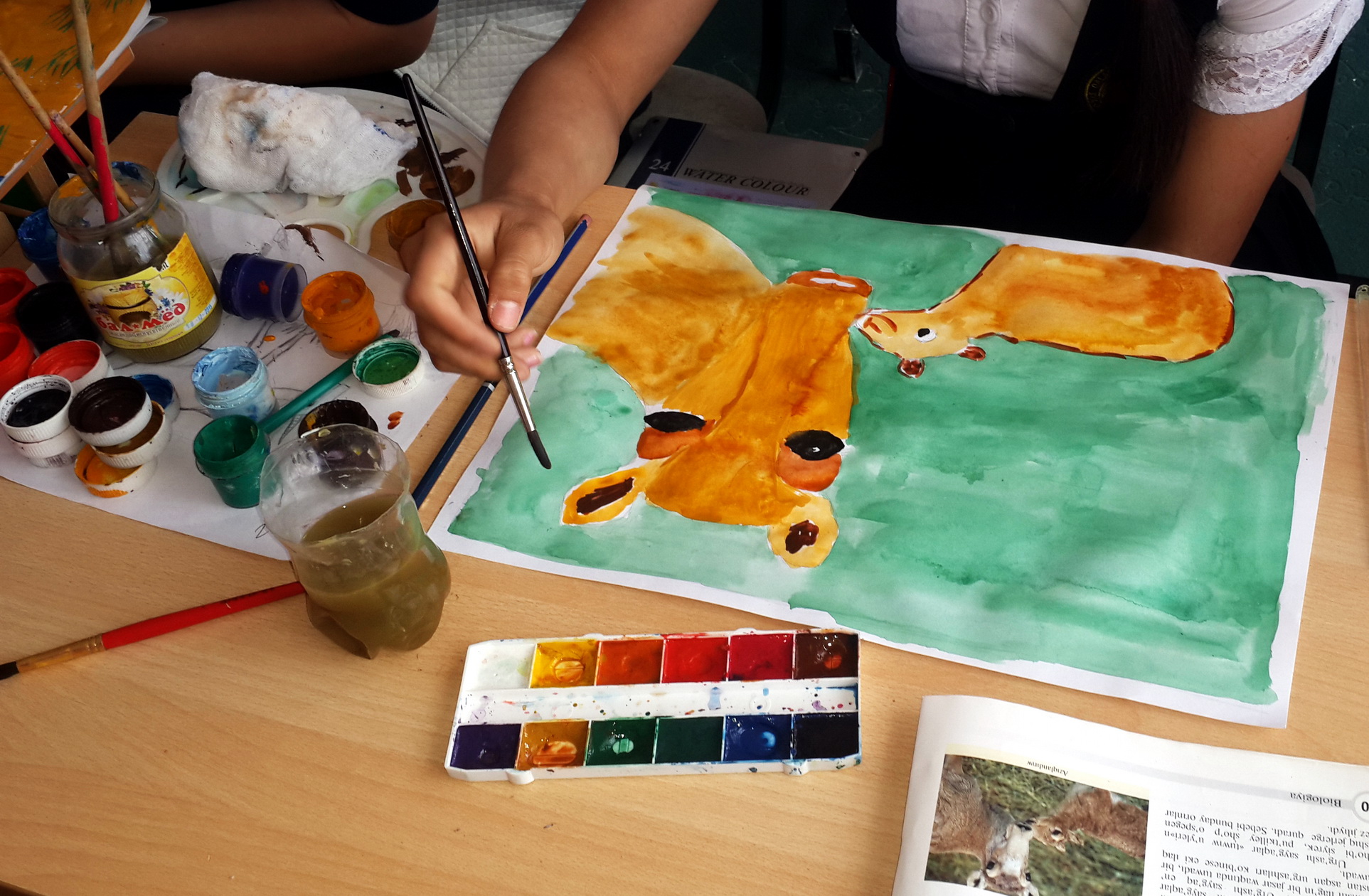It may look like a creature straight out of the Star Wars universe, but the saiga, with its distinctive nose, is an antelope species dating back to prehistoric times. Today, it is critically endangered, having seen a population decrease of a staggering 95 per cent in just 15 years. To find out what work is being done to counteract the many threats the saiga is facing, we speak to zoologist and Saiga Conservation Alliance co-founder and executive secretary Elena Bykova, and its Young Conservation Leader Olya Espiova, who is also a psychologist
Tell us about the saiga.
Olya Espiova: The saiga’s long, wobbly noses and large expressive eyes make one think of muppets or Dr Seuss characters, but these adorable antelopes are much tougher than they look, having roamed the Earth since the ice age, outliving mammoths and sabre-toothed tigers. They once migrated across arid plains in eastern Europe, Asia and Alaska, but they are now only found in smaller ranges in Kazakhstan, Mongolia, Russia, Turkmenistan and Uzbekistan. All of the saiga’s range states were once part of the Soviet Union or China (for most of the last century, in fact). The saiga became extinct in China in the 1960s.
The Saiga Conservation Alliance works across Kazakhstan, Uzbekistan and Russia – how do you choose where to take your expertise?
Elena Bykova: I was born in Uzbekistan and have lived here most of my life. Over the years, I’ve seen the impact of numerous environmental issues – land degradation, poaching and climate change – that have all contributed to the threats faced by endangered species. As I witnessed this, it ignited a natural desire within me to try to improve the situation. I ended up researching the saiga antelope, a unique and critically endangered species that now faces challenges within its natural habitat across a range of countries, including Uzbekistan, Kazakhstan, Russia and Mongolia. It made sense to structure the work of the Saiga Conservation Alliance [SCA] around all of these critical areas. We are mainly based in Uzbekistan, but we also actively cooperate with partners and colleagues in Kazakhstan, Russia and Mongolia. Without studying and protecting the saiga, our generation could witness its disappearance forever.

Young Conservation Leader Olya Espiova and Vladimir Kalmykov, Director of the Stepnoy reserve in Russia’s Astrakhan province
How did you each get involved with the Saiga Conservation Alliance?
EB: As a field zoologist, I focus on endangered mammal species. I have worked with Imperial College London and Professor Milner-Gulland and her group on saiga antelope reproductive biology, with colleagues in Russia (Doctor Anna Luschekina and Professor Yuri Arylov) and also Kazakhstan (Doctor Yuri Grachev and Professor Amankul Bekenov). We all studied the saiga together to find out how to best preserve the species. As we are all scientists and like-minded people passionate about wildlife conservation, we made a good team, establishing the SCA in 2006. Since then, it has expanded significantly and we have been joined by colleagues from Mongolia and China, among others.
OE: I was born and raised in a family of dedicated biologists. Both my mother and father have been great role models, inspiring and instilling me with a love of wildlife. Together we traveled to many amazing wildlife locations, so it’s no surprise that I grew up to follow in their footsteps. However, instead of becoming a biologist, I chose to study psychology so that I could work with local communities to help them change their attitudes and behavior towards wildlife. For the past six years, I’ve been focusing on community outreach projects for the SCA.
What kind of threats do the saiga face?
OE: The main threat to the saiga is poaching, followed by illegal wildlife trade (the smuggling of saiga horn). Like rhino horn, Saiga horn is used in traditional Chinese medicine, which is why there is such a high demand for it. Another threat is the industrialization of the regions in which saiga live. New roads, for example, are being built across their migratory routes, leading to habitat degradation and high disturbance.
Furthermore, there have been cases of saiga die-off on a large scale [in 2015, more than 200,000 of the animals died in Kazakhstan because of respiratory illness], provoked by bacteria or disease. Although such massive die-off cases are the exception rather than the rule and do not happen on a regular basis, they are considered severe but not as critical as the ongoing issues of poaching and habitat loss.
What are the proudest achievements of the Saiga Conservation Alliance to date?
EB: We have developed ‘the saiga transects census method’, which allows us to collect data on saiga numbers and their distribution in the Ustyurt Plateau in Uzbekistan and have implemented it with local teams or rangers. We also work closely with – and train – rangers to be dedicated to saiga conservation as a focus species and have an understanding of the larger ecosystem of the region. It is also important to us that we involve the community, which we do by conducting social educational events such as the Day of Protected Areas, held in collaboration with several schools across Uzbekistan.
In terms of illegal trade, we help improve the capacity of law enforcement agencies through training and follow up any cases of saiga horn confiscation. We also raise awareness through more traditional channels, such as brochures and other printed material.
What are the challenges in raising awareness of the saiga?
OE: The biggest challenge is to reach a wider international community, because saiga are less well known worldwide. People are far more familiar with charismatic species like elephants, giraffes and cheetahs. That is why it is truly challenging to bring the saiga to the attention of potential supporters, even though it is in urgent need of help.
Some of our most successful awareness events have included Saiga Day, which is celebrated in all saiga range countries in the beginning of May. This event brings local communities together. On an international level, we participate in conferences and at wildlife gatherings, such as the Wildlife Conservation Expo in San Francisco, which attracts large crowds of people who are passionate about wildlife. Our experts also give public talks, including at TEDx, and organize workshops. They also try to be in the public eye and the media as much as possible. We produce our own video content, too, with the aim to educate our audience about the saiga.
The Saiga Conservation Alliance was supported by the Whitley Fund for Nature in 2011 and 2013. How has this conservation charity helped you?
EB: Thanks to the Whitley Fund for Nature [WFN], we have carried out some challenging projects that otherwise wouldn’t have been possible. For instance, we developed a monitoring system to help tackle issues of poaching and illegal trade. We were also able to redesignate the Saigachy Reserve (a saiga calving ground) in Uzbekistan. This involves properly defining its borders, repairing its communications equipment, creating facilities for tourists and carrying out geological exploration. Before, this area existed as a reserve but with no dedicated staff, so it was ineffectual in its primary objective of protecting the saiga.
These sorts of initiatives always involve certain risks, and it can be hard to get support for them, as one cannot predict the outcome with 100 per cent certainty. However, thanks to WFN, we have been able to test our hypotheses in the field and make a notable difference to our research and conservation efforts.
What plans do you have for the future?
EB: Our goals are to improve control over the illegal use of saiga products, ensure good protection of the species (such as through the creation or improvement of protected areas), change the attitudes and behavior of locals through education and community work, and engage a wider global audience through awareness campaigns.
To do so, we will continue our work in all saiga range countries and beyond. We also look forward to having better support of the protected areas and to improve the professional skills of all staff, restore degraded lands, mitigate the impact of infrastructure development in key areas, and involve industrial companies in wildlife conservation.
For more information about the saiga, find the Saiga Conservation Alliance on social media or check out their website here
Photography courtesy of the Saiga Conservation Alliance







